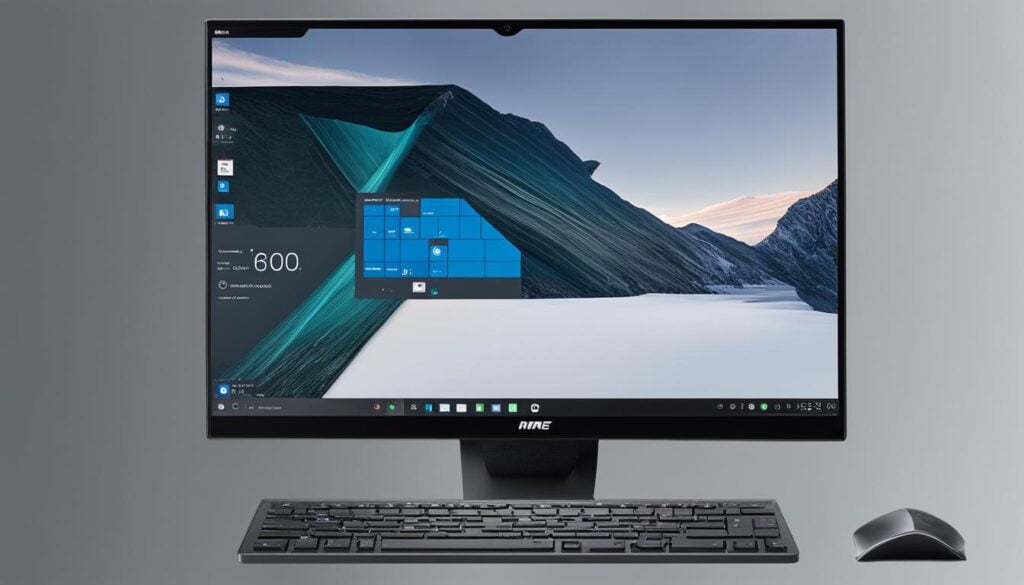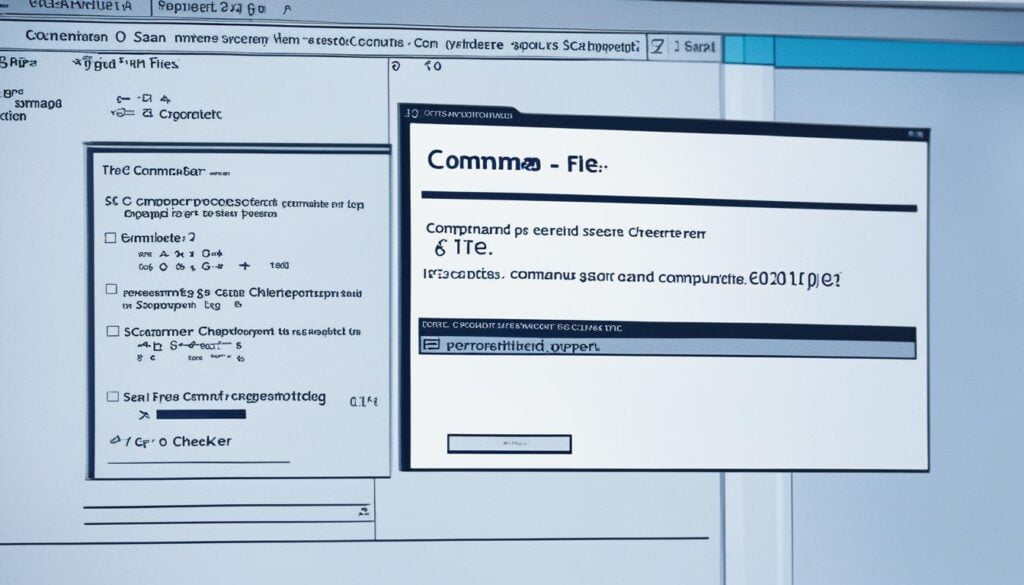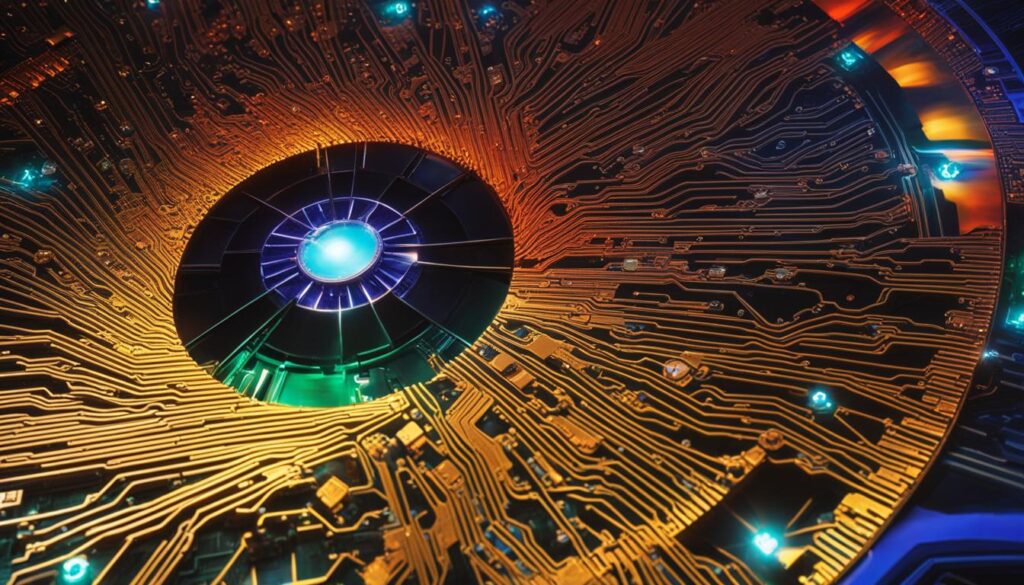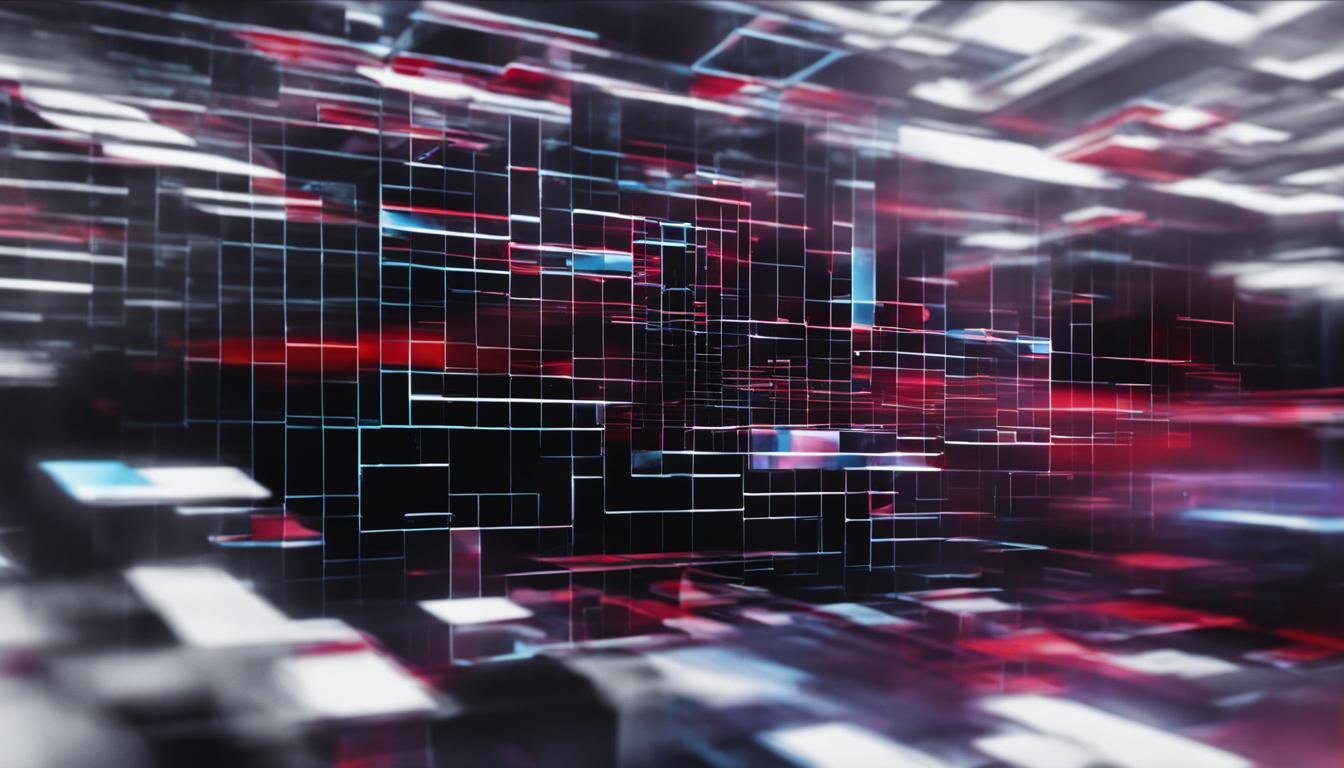Contents
- 1 Common Causes of Windows 10 Error 0xc1900200
- 2 Solution 1 – Disconnect All USB Devices
- 3 Solution 2 – Check Minimum Requirements
- 4 Solution 3 – Extend System Reserved Partition
- 5 Solution 4 – Run System File Checker
- 6 Solution 5 – Reset Windows Update Components
- 7 Solution 6 – Run DISM
- 8 Conclusion
- 9 FAQ
- 9.1 What is Windows 10 error 0xc1900200?
- 9.2 What are the common causes of Windows 10 error 0xc1900200?
- 9.3 How can I fix Windows 10 error 0xc1900200?
- 9.4 How do I disconnect USB devices to fix Windows 10 error 0xc1900200?
- 9.5 What are the minimum requirements for Windows 10?
- 9.6 How do I extend the system reserved partition to fix error 0xc1900200?
- 9.7 How do I run the System File Checker to fix Windows 10 error 0xc1900200?
- 9.8 How do I reset the Windows Update components to fix error 0xc1900200?
- 9.9 How do I run the DISM command to fix Windows 10 error 0xc1900200?
Are you encountering Windows 10 error 0xc1900200 when trying to update your operating system? This frustrating error can prevent you from installing the latest version of Windows 10. But don’t worry, I’m here to help! In this guide, I will provide you with 7 effective solutions to fix error code 0xc1900200 and get your Windows 10 update back on track.
Key Takeaways:
- Windows 10 error 0xc1900200 can occur during the update process.
- The error is often caused by not meeting the minimum requirements for installation.
- Disconnecting USB devices, checking minimum requirements, and extending the system reserved partition are some solutions to consider.
- Running the System File Checker (SFC) and DISM commands can help in resolving the error.
- Resetting the Windows Update components can provide a fresh start.
Common Causes of Windows 10 Error 0xc1900200
When encountering Windows 10 error 0xc1900200, there are several common causes that users should be aware of. These causes include:
- Having external USB devices connected during the update process
- Not meeting the minimum requirements for Windows 10
- Insufficient available space on the system reserved partition
Let’s delve into each cause in more detail:
1. External USB Devices
In some cases, having external USB devices connected to your computer during the Windows 10 update can trigger error 0xc1900200. These devices can include printers, controllers, or any other peripherals. Disconnecting these devices before initiating the update process can help eliminate potential conflicts and ensure a smoother update experience.
2. Minimum Requirements
Windows 10 has specific hardware and software requirements that must be met for a successful update. Failure to meet these requirements can result in error 0xc1900200. To avoid this issue, ensure that your computer meets or exceeds the minimum specifications for Windows 10, including sufficient RAM, CPU capabilities, and available disk space.
3. Insufficient System Reserved Partition Space
The system reserved partition plays a crucial role in the Windows 10 update process. If there is insufficient space on this partition, error 0xc1900200 may occur. To resolve this issue, it is necessary to extend the system reserved partition to provide enough space for the update. Professional partition management software, such as MiniTool Partition Wizard, can be used to accomplish this task effectively.
In the next section, we will explore the first solution to troubleshooting error 0xc1900200 – disconnecting all USB devices during the update process.
Solution 1 – Disconnect All USB Devices
One of the solutions to troubleshoot Windows 10 error 0xc1900200 is to disconnect all unnecessary external USB devices, including printers and controllers, during the update process. This helps to eliminate any potential conflicts or compatibility issues with the USB devices that could be causing the error.

| Steps to Disconnect USB Devices: |
|---|
| 1. Save and close all open files and applications. |
| 2. Unplug any unnecessary USB devices connected to your computer, such as printers, scanners, external hard drives, or controllers. |
| 3. Restart your computer to ensure the changes take effect. |
| 4. Attempt the Windows 10 update again to see if the error 0xc1900200 is resolved. |
By disconnecting USB devices, you can minimize potential conflicts and create a smoother update process, increasing the chances of successfully fixing Windows 10 error 0xc1900200.
Solution 2 – Check Minimum Requirements
To ensure a successful Windows 10 update without error code 0xc1900200, it is important to check whether your computer meets the minimum requirements for the Windows 10 operating system. This includes verifying that your CPU, RAM, and system disk space meet the requirements. Additionally, make sure all drivers on your PC are up to date.
Minimum Hardware Requirements for Windows 10:
- Processor: 1 GHz or faster processor or SoC (system on a chip)
- RAM: 1 GB for 32-bit or 2 GB for 64-bit
- Hard Disk Space: 16 GB for 32-bit or 20 GB for 64-bit
- Graphics Card: DirectX 9 or later with WDDM 1.0 driver
- Display: 800 x 600 resolution or higher
Recommended Software Requirements for Windows 10:
- Latest version of Windows 10 compatible drivers for all hardware components
- Up-to-date antivirus software for enhanced security
- Recent updates and patches for installed programs
Ensuring that your computer meets these minimum hardware and software requirements is crucial for a smooth Windows 10 update process. Failure to meet these requirements can lead to compatibility issues and error code 0xc1900200 during the update.
It is recommended to visit the official Microsoft website to find detailed information about the specific requirements for your version of Windows 10. Additionally, regularly updating your drivers and keeping your system software up to date can prevent potential errors and ensure a stable operating system.

Quote:
“By checking and meeting the minimum hardware and software requirements for Windows 10, you can avoid common update errors like 0xc1900200 and enjoy a seamless experience with the latest version of the operating system.” – Microsoft Support
Solution 3 – Extend System Reserved Partition
If you are encountering the error code 0xc1900200 during a Windows 10 update, it could be due to inadequate space on your system reserved partition. To fix this error, you need to extend the partition. However, Disk Management alone cannot perform this task efficiently. Instead, you can utilize a reliable and professional partition manager like MiniTool Partition Wizard.
MiniTool Partition Wizard offers a comprehensive set of features that allow you to move and resize partitions, as well as extend them. By using this powerful tool, you can easily resolve the insufficient space issue on the system reserved partition, thereby fixing the error 0xc1900200.
Below is an illustrative example of how to use MiniTool Partition Wizard to extend the system reserved partition:
- Step 1: Launch MiniTool Partition Wizard and select the system reserved partition from the disk map.
- Step 2: Right-click on the partition and choose the “Extend” option from the context menu.
- Step 3: In the pop-up window, specify the amount of additional space you want to allocate to the system reserved partition.
- Step 4: Click on the “OK” button to apply the changes.
- Step 5: Finally, click on the “Apply” button located at the top left corner of the MiniTool Partition Wizard interface to execute the operation.
By following these steps, you can effectively extend the system reserved partition and resolve the error 0xc1900200. Ensure that you carefully execute each step to avoid any data loss or unintended consequences.
With the assistance of MiniTool Partition Wizard, extending the system reserved partition becomes a simple and hassle-free task, allowing for a smooth Windows 10 update without encountering the error 0xc1900200.
Solution 4 – Run System File Checker
Another effective solution to fix Windows 10 error 0xc1900200 is to run the System File Checker (SFC) utility. The SFC utility scans and repairs corrupted system files that may be causing the error. By using Command Prompt, you can run the SFC command to scan and fix any corrupted system files on your PC. This can help to resolve the Windows update issue and allow for a successful update without error.
To run the System File Checker:
- Open Command Prompt as an administrator by right-clicking on the Start menu and selecting “Command Prompt (Admin).”
- Type the command “
sfc /scannow” and press Enter. - Wait for the scan to complete. The SFC utility will automatically scan and fix any corrupted system files it finds.
- Once the scan is finished, restart your computer and try updating Windows 10 again.
Running the System File Checker can help to identify and repair any corrupted system files that may be causing the error 0xc1900200. It is a recommended troubleshooting step in the process of resolving Windows update issues.

Solution 5 – Reset Windows Update Components
If the Windows update error 0xc1900200 persists, resetting the Windows Update components can be an effective fix. This involves stopping and renaming essential Windows Update services, as well as deleting certain folders associated with Windows Update. By doing so, you can clear any corrupted or stuck components, allowing for a fresh start with the Windows Update process.
To reset the Windows Update components, follow these steps:
- Open an elevated Command Prompt by right-clicking on the Start button and selecting “Command Prompt (Admin)”.
- Type the following commands one by one, pressing Enter after each command:
net stop wuauserv
net stop cryptSvc
net stop bits
net stop msiserver
ren C:\Windows\SoftwareDistribution SoftwareDistribution.old
ren C:\Windows\System32\catroot2 catroot2.old
net start wuauserv
net start cryptSvc
net start bits
net start msiserver
After executing these commands, restart your computer and try updating Windows 10 again. This process resets the Windows Update components, which can help resolve the error 0xc1900200 and enable a successful update.
Remember to run these commands as an administrator to ensure they execute correctly.

Resetting the Windows Update components can fix the error 0xc1900200 in Windows 10.
This solution is one of the troubleshooting steps for resolving the Windows 10 update error 0xc1900200. By resetting the Windows Update components, you can clear any potential issues that may be hindering the update process and successfully update your Windows 10 system.
Solution 6 – Run DISM
If the SFC scan does not resolve the Windows 10 error 0xc1900200, you can try running the Deployment Image Servicing and Management (DISM) command. DISM is a powerful command-line tool that can help repair Windows operating system issues. By running the DISM command, you can scan for corruption and attempt to repair any issues that are causing the Windows update error.
To run the DISM command, follow these steps:
- Open Command Prompt as an administrator. You can do this by right-clicking the Start button and selecting “Command Prompt (Admin)”.
- In the Command Prompt window, type the following command and press Enter:
dism /online /cleanup-image /restorehealth - DISM will now scan your system for any corrupt files and attempt to fix them. This process may take some time, so be patient.
- Once the scan and repair process is complete, restart your computer.
After restarting, try updating Windows 10 again and check if the error 0xc1900200 is resolved. Running the DISM command can help to fix any underlying system issues that may be interfering with the update process.
Conclusion
In conclusion, the Windows 10 error 0xc1900200 can be frustrating when trying to update the operating system. However, by following these solutions and troubleshooting tips, you can resolve the error and successfully install the Windows 10 update.
Firstly, it is important to check whether your computer meets the minimum requirements for the Windows 10 operating system. Ensure that your CPU, RAM, and system disk space are sufficient. Updating outdated drivers on your PC can also help ensure a successful update without error code 0xc1900200.
Additionally, disconnecting all unnecessary external USB devices during the update process can eliminate potential conflicts or compatibility issues. If the error is caused by insufficient space on the system reserved partition, extending the partition using a reliable tool like MiniTool Partition Wizard can resolve the issue.
If the error persists, running the System File Checker (SFC) utility can help repair any corrupted system files that may be causing the error. Resetting the Windows Update components or running the Deployment Image Servicing and Management (DISM) command are also effective solutions to fix the Windows 10 error 0xc1900200.
By following these steps, you can overcome the error and enjoy the benefits of the latest Windows 10 version.
FAQ
What is Windows 10 error 0xc1900200?
Windows 10 error 0xc1900200 is an error code that occurs when trying to update Windows 10 to the latest version. It is often caused by factors such as incompatible USB devices, not meeting minimum requirements, or insufficient space on the system reserved partition.
What are the common causes of Windows 10 error 0xc1900200?
The common causes of Windows 10 error 0xc1900200 include having external USB devices connected during the update process, not meeting the minimum requirements for Windows 10, and insufficient available space on the system reserved partition.
How can I fix Windows 10 error 0xc1900200?
There are several solutions to fix Windows 10 error 0xc1900200. These include disconnecting all unnecessary external USB devices, checking whether your computer meets the minimum requirements for Windows 10, extending the system reserved partition if needed, running the System File Checker (SFC) utility, resetting the Windows Update components, and running the Deployment Image Servicing and Management (DISM) command.
How do I disconnect USB devices to fix Windows 10 error 0xc1900200?
To disconnect USB devices and fix Windows 10 error 0xc1900200, you should unplug all unnecessary external USB devices, such as printers and controllers, during the update process. This helps to eliminate any potential conflicts or compatibility issues with the USB devices that could be causing the error.
What are the minimum requirements for Windows 10?
The minimum requirements for Windows 10 include a 1 GHz or faster processor, 1 GB of RAM for 32-bit or 2 GB for 64-bit, 16 GB of available hard disk space for 32-bit or 20 GB for 64-bit, a DirectX 9 or later graphics card, and a display with at least 800×600 resolution.
How do I extend the system reserved partition to fix error 0xc1900200?
To extend the system reserved partition and fix error 0xc1900200, you can use a professional partition manager like MiniTool Partition Wizard. This tool allows you to move/resize partitions, extend partitions, and perform other disk management operations to ensure sufficient space on the system reserved partition.
How do I run the System File Checker to fix Windows 10 error 0xc1900200?
To run the System File Checker (SFC) and fix Windows 10 error 0xc1900200, you can use Command Prompt. Open Command Prompt as an administrator, then type “sfc /scannow” and press Enter. The SFC utility will scan and repair any corrupted system files that may be causing the error.
How do I reset the Windows Update components to fix error 0xc1900200?
To reset the Windows Update components and fix error 0xc1900200, you can stop and rename essential Windows Update services, as well as delete certain folders associated with Windows Update. This process clears any corrupted or stuck components, allowing for a fresh start with the Windows Update process.
How do I run the DISM command to fix Windows 10 error 0xc1900200?
To run the Deployment Image Servicing and Management (DISM) command and fix Windows 10 error 0xc1900200, you can use Command Prompt. Open Command Prompt as an administrator, then type “DISM /Online /Cleanup-Image /RestoreHealth” and press Enter. The DISM command will scan for corruption and attempt to repair any issues that are causing the error.
